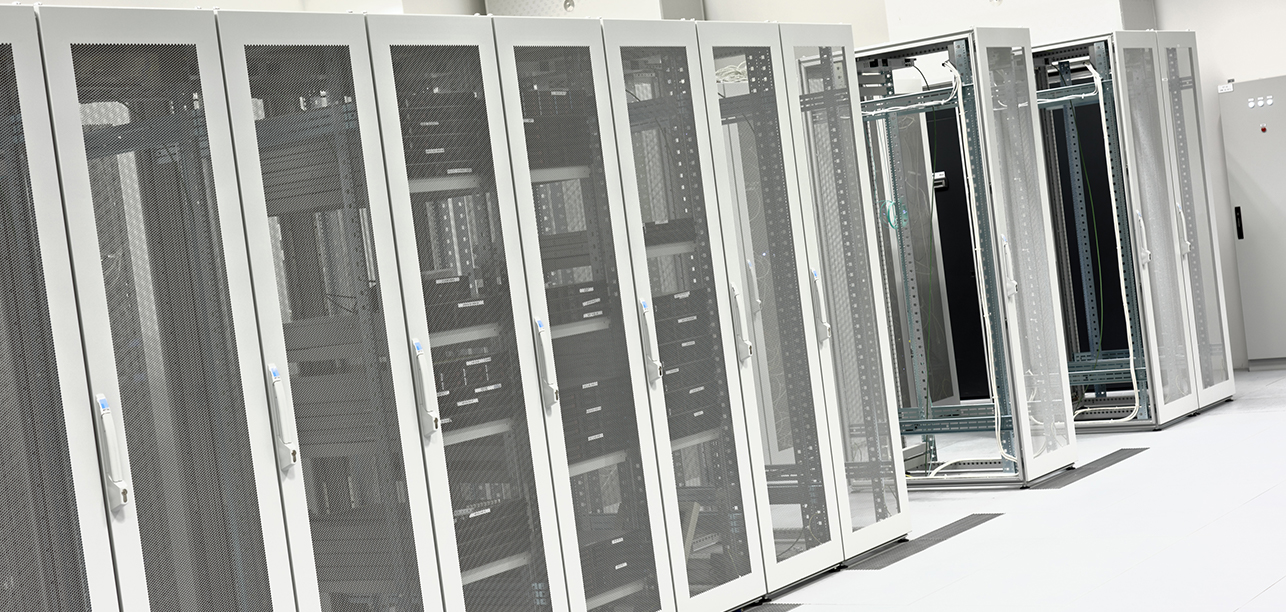Month: March 2010

How to handle high I/O workloads in the cloud — or Voxel offers SSD cloud servers!
The concept of scale-out hosting deployments for web applications is something we’re super excited about here at Voxel. Our VoxCLOUD compute product is helping Voxel customers scale their applications effortless by using tight integration with our Hosting API (hAPI) or through the use of our graphical Adobe AIR desktop infrastructure manager. However, not all application loads lend themselves well to traditional cloud solutions (horizontal scaling) — and unfortunately this means that for some, moving to the cloud can actually result in decreased performance and surprisingly large cost increases.
Often, unfortunately, overcoming the limitations preventing purely horizontal scalability result in spending substantial time and money – even if the blocker from getting into the cloud is a relatively small piece of your overall deployment. One of the unique aspects of Voxel’s cloud approach is that we’re agnostic on the actual platform in use.
We consider the major benefit of cloud hosting to be the service delivery model: incremental (hourly, or based on consumed unit) billing, instant deployment and API-based control of your infrastructure. Over the years, however, cloud has also come to mean virtualization. At Voxel, we look at virtualized cores and racks of servers as largely one and the same (it’s just logical unit size!), so offering physical hardware, with its unique benefits for “vertical scaling” (which is to say utilizing bigger rather than more servers – specifically for applications where it’s either very difficult, or near impossible to reap benefits from parallelization) just makes sense to us.
Which is why Voxel offers 3 physical server configurations available as part of our cloud portal, APIs and hourly billing model – and the hardware is available in minutes, just as you would expect from a cloud based VM. As many people have discovered through various trials and tribulations, bare metal is still the fastest, cheapest, and simplest way to answer vertical scaling issues of the more “traditional” applications, and in our world, that shouldn’t preclude you from “going Cloud”.
The flexibility gained in mixing and matching physical and virtual platforms is being exploited by some of our more savvy customers. What we’re seeing is that the “high I/O” crowd realized it was cheaper and faster to just deploy hourly servers with local, fast disk access to run both their most I/O intensive applications, or applications that are the most difficult to scale horizontally, such as Apache Solr where latency is king or write-heavy traditional databases (MySQL, PostgreSQL). For many, the trade-off for waiting to hop into the cloud was far more detrimental than going into it without being perfectly horizontally scalable (the oft-rumored holy grail).
These customers have been attracted to our powerful Type 3 configuration, a physical 2U server with Dual Quad Core Xeon CPUs and 8 x 15K SAS Hard Drives worth of blistering I/O in a proper RAID array. The question then becomes, when you’re simply pushing these boxes to their limit – and don’t need more storage, what’s next?
Introduction of SSD Cloud Servers
Traditionally, getting more I/O from your server meant having more spindles (disks) with fast RPMs. This means a lot of wasted storage, power, datacenter space just to get more spinning platters, and net out more usable IOps (Input/Output Operations per Second). It also means even more specialized hardware – which is not ideal from many perspectives and makes having “interchangeable parts” even more difficult. Enter the Solid State Disk (or SSD). SSDs are non-volatile (your data stays around even if there’s no power – unlike, RAM) storage devices with no moving parts.
Without moving parts, the disk latency – the amount of time it takes for the disk to be able to start reading the piece of data you want – is reduced dramatically (from about ~5.5ms on a typical 450GB 15K SAS hard drive, to ~0.1ms on an SSD drive) this translates to much higher IOps – and much better random I/O performance. This means, of course, a better user experience (not just that you can handle more concurrent users, but that your pageloads and interactions will complete much faster for each user of your site).
Internally, Voxel engineers have been including SSD drives in dedicated deployments for nearly a year and have seen typical increases in I/O performance of 8-10x over SAS alternatives. Recently, a Voxel client with a popular Facebook application had a single MySQL server with 4x SSDs and 32GB of RAM outperforming 7 servers with 4x 15K SAS drives and 16GB of RAM each, and still had performance to spare. Quite simply, SSDs are a fantastic way to get cheaper scalability and fantastic performance improvements for relatively small data sets with extraordinary performance requirements for I/O and latency – and Voxel wants to bring these advantages into our Cloud.
Starting next Friday, our clients will be able to turn-up hourly servers with four CPU cores, 8GB of RAM, and an 80GB Intel SSD for just $0.37/hour – and that SSD is capable of ~6,000 I/O operations per second, or ~15,600,000,000 (15.6billion) I/O operations per month. Just the I/O alone would be $2.16/hour or $1,560 for the whole month at another provider. Think about it – then sign up here to see what a difference an SSD makes!
Explore HorizonIQ
Bare Metal
LEARN MORE
Stay Connected

Latency matters in the Cloud — CloudHarmony benchmarks detail inter-cloud issues
 Our friends over at Cloudharmony just published a new benchmark, this time on inter-cloud throughput. I think they are doing a great job at trying to provide some much needed transparency on IaaS performance. In their last benchmark (which ranked throughput to end users), Voxel was ranked as the fastest cloud in the United States (IBM and EC2 came in second and third). So, how did we fare this time around? I’m pleased to report that we set the speed-record for inter-cloud transfer — 183Mbit/sec between our cloud in NYC and Linodes cloud in Newark NJ, to be specific. While we’re of course thrilled by that fact, there are some points that should be made that help explain this result:
Our friends over at Cloudharmony just published a new benchmark, this time on inter-cloud throughput. I think they are doing a great job at trying to provide some much needed transparency on IaaS performance. In their last benchmark (which ranked throughput to end users), Voxel was ranked as the fastest cloud in the United States (IBM and EC2 came in second and third). So, how did we fare this time around? I’m pleased to report that we set the speed-record for inter-cloud transfer — 183Mbit/sec between our cloud in NYC and Linodes cloud in Newark NJ, to be specific. While we’re of course thrilled by that fact, there are some points that should be made that help explain this result:
1) Latency matters! The single biggest factor that can help (or hurt) network throughput is latency. This is why the speed-record was set between two clouds that are across the Hudson river from each other. I can see downtown Newark from our office, and Linode is only a few milliseconds away from us, from a network perspective. You can’t sling packets faster than the speed of light, so it helps to be close. Voxel is the only cloud provider to offer service out of the United States, Europe, and Asia, so pick the location that makes the most sense for you and your users.
2) A lot of clouds rate-limit at 100Mbit/sec, or less As CloudHarmony pointed out, many clouds rate limit individual virtual machines to 100Mbit/sec, a ‘cloud speed limit’ of sorts. With VoxCLOUD, the limits are much higher (as they are at Linode too, apparently). At Voxel we like to joke that QoS stands for Quantity of Service — it’s in our DNA to massively overbuild our network. Maybe operating the VoxCAST CDN has something to do with that.
Next week, we will be making some network-related updates to VSE (the Red Hat based “Voxel Server Environment”). These updates and tweaks will bring further improvements to network performance and throughput, driven from optimization to the Linux stack. Next week also brings a new version of VoxCLOUD (1.10). More about both in a future post, stay tuned!
Explore HorizonIQ
Bare Metal
LEARN MORE
Stay Connected

Singapore Web Hosting – Why Host your Asia Cloud Server or Dedicated Server with Voxel?
With Asian web users representing an even larger portion of today’s Internet, Voxel is seeing more of its customers target the Asian market and require Asian web hosting for their applications, social networking tools, ad delivery solutions or media content. Users are demanding top performance and service providers and startups need to deliver that in a cost-effective manner. So how does Voxel address the vast market challenges and differences of Asian hosting? The answer is simpler than one might think. When we decided to tackle this problem, Voxel first took a look at the differences in hosting between more mature markets (US/Europe) and the Asian web hosting market. We found that:
- Network quality varied dramatically from country-to-country or within certain regions, often making a SaaS application hosted in Hong Kong unusable to business customers in Singapore.
- Pricing was hidden behind walled gardens of custom quote forms or long term commitments. This was in contrast to the wide array of transparent pricing options available in the US and Europe.
- Asian cloud computing offerings were limited and no major public cloud vendors were offering solutions in Asia.
- Bandwidth pricing and server bandwidth was much more expensive for end users, or was limited in small quantities like 1Mbps “capped” services.
Voxel recognized that startups in Asia, as well as US and European Internet companies moving into the Asian market, needed these issues addressed in order to fully capitalize on the opportunities in this emerging Internet market. To that end, Voxel decided to open an Asian datacenter and hosting location and extend the Voxel IP network to Singapore and Hong Kong. We opened our first datacenter presence in Singapore in 2009, enabling our clients to quickly deliver media files, HTTP assets and videos via our Asian CDN nodes. We then worked to build out our network, establish peering relationship and expand regional interconnection options so that we could lower the price of bandwidth for Asian customers and increase the quality and control of the delivery. Finally, late last year, Voxel started offering our popular hosting services in Singapore, including dedicated servers and our cutting-edge VoxCLOUD cloud computing and cloud server product. Customers can now take advantage of:
- Transparent and cost competitive bandwidth pricing with fully burstable, 2 x 1Gbps per server network ports.
- Global CDN delivery via VoxCAST with each and every account.
- Local cloud servers and dedicated servers, available through our online control panel, desktop Adobe AIR application or REST-based hosting API.
- BaseManaged raw infrastructure or fully ProManaged services, including custom load-balanced clusters, multi-site hosting options and high-scalability deployments.
- Global hosting options via one invoice: the U.S. from our New York hosting facility, Europe from our Amsterdam hosting facility and Asia from our Singapore hosting facility.
- 24 x 7 x 365 export support on the entire infrastructure stack (hardware, Linux OS, CDN delivery, and application services support).
- Local sales offices in both New York and Singapore
We encourage customers who need to target the Asian Internet market to contact us. We have sales engineers available 24 hours per day out of both our New York and Singapore offices and we’d love to help you reach your Asian customer base.


